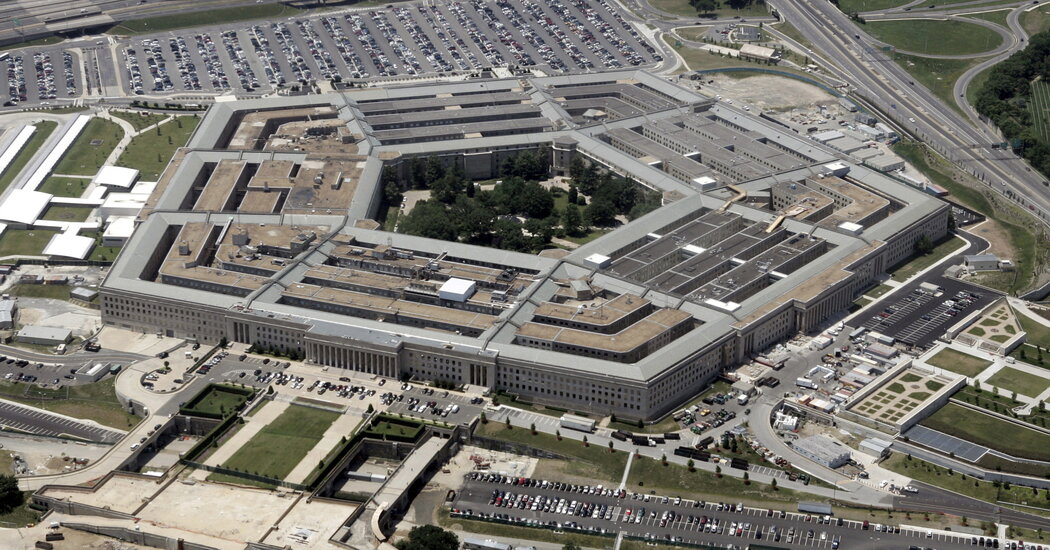
U.S. Special Operations forces carried out what the Pentagon called a “successful” counterterrorism mission in northwest Syria early on Thursday. The risky commando assault targeted someone believed to be a senior jihadist leader, but rescue workers said women and children were among at least 13 people killed during the raid.
American helicopters ferried the commandos into position soon after midnight, surrounding a house in Atmeh, a town close to the border with Turkey in rebel-held Idlib Province, according to eyewitnesses, social media reports and the Syrian Observatory for Human Rights, a conflict monitor based in Britain.
A long, tense standoff ensued, with loudspeakers blaring warnings in Arabic for everyone in the house to surrender, neighbors said. After about two hours, the house’s occupants had not emerged and a major battle erupted, with heavy machine gun fire and apparent missile strikes that damaged the house, collapsed some of its walls and blew out its windows.
During the operation, one of the American helicopters suffered a mechanical problem, was forced to land and was later destroyed by American attack aircraft. After about three hours, the American commandos and their remaining helicopters flew off, witnesses said.
Shortly after midnight on Thursday in Washington, John F. Kirby, the Pentagon spokesman, issued a terse statement: “U.S. Special Operations forces under the control of U.S. Central Command conducted a counterterrorism mission this evening in northwest Syria. The mission was successful. There were no U.S. casualties. More information will be provided as it becomes available.”
American officials declined to identify what one called a “high value” target, pending a DNA analysis, but said that the Biden administration could make an announcement as early as Thursday.
One possibility could be the leader of the Islamic State, Abu Ibrahim al-Hashimi al-Qurayshi.
Indeed, the helicopter-borne commando assault resembled the raid in October 2019 that culminated in the death of Abu Bakr al-Baghdadi, the previous leader of the Islamic State. That raid took place not far from the one on Thursday.
A number of senior Qaeda leaders are also believed to be hiding out in northwestern Syria.
The airborne raid came days after the end of the largest U.S. combat involvement with the Islamic State since the end of the jihadists’ so-called caliphate three years ago. American forces backed a Kurdish-led militia in northeastern Syria as it fought for more than a week to oust Islamic State fighters from a prison in the city of Hasaka.
Video from the scene on social media showed people pulling the bodies of at least nine men, women and children from the rubble of the badly damaged house.
Witnesses suggested that American counterfire against the house caused the damage. But a senior American military official said there was an explosion inside the house that was not caused by U.S. firepower, and was more likely caused by the target of the raid blowing himself up.
Syria Civil Defense, also known as the White Helmets, pulled bodies and survivors from the rubble after the airstrikes and wrote on Twitter that at least 13 people had been killed during the operation, including four women and six children. The group did not provide further details on the identities of those killed.
The Syrian Observatory for Human Rights also reported 13 deaths, including three women and four children and others who had not yet been identified.
The raid targeted a stand-alone, three-story cinder block building surrounded by olive trees. Images shared on social media by activists who visited the site showed simple rooms with mats on the floors, a diesel heater and clothes and blankets scattered about, some of them covered with blood.
The size, scope and duration of the battle and the fact that the United States risked sending in commandos, and not just launching airstrikes, suggested that the focus of the raid was a senior leader of an extremist movement.
The White House was abuzz on Wednesday night about something secretive afoot, and Pentagon officials were unusually tight-lipped about the mission’s details.
Analysts said that the Atmeh area had crowded camps that jihadists used to hide among people displaced by the 10-year-old Syrian civil war.
Idlib Province is home to many violent Islamic extremist groups, dominated by Hayat Tahrir al-Sham, formerly the Nusra Front, which was formerly linked to Al Qaeda. Syrian military forces, backed by Iranian and Russian firepower, have targeted the group. Another prominent group is Hurras al-Din, a Qaeda affiliate.
Hurras al-Din emerged in early 2018 after several factions broke away from the Nusra Front, which at least publicly has since distanced itself from Al Qaeda’s overall leadership. Hurras al-Din is the successor to the Khorasan Group, a small but dangerous organization of hardened senior Qaeda operatives that the Qaeda leader Ayman al-Zawahri sent to Syria to plot attacks against the West.
The province has been the scene of American airstrikes in recent months, but the pace of activity there has been far short of the American-led coalition’s attacks against remnants of the Islamic State in northeastern Syria.
In early December, an American MQ-9 Reaper drone carried out a strike against a suspected senior Qaeda leader and planner in Idlib. But the initial review of the attack indicated that the drone’s missile struck both the Qaeda leader on a motorcycle and a Syrian family in a car close to the motorcycle.
The Qaeda leader was killed; members of the Syrian family were injured.
The military’s Central Command opened an investigation into the attack, the results of which have not yet been made public.
Two months before that, in October, an MQ-9 carried out an airstrike in northwest Syria that military officials said killed a senior Qaeda leader, Abdul Hamid al-Matar.
And on Sept. 20, an American airstrike near Idlib killed a Qaeda leader, Salim Abu Ahmad, U.S. military officials said.
Evan Hill contributed reporting.




